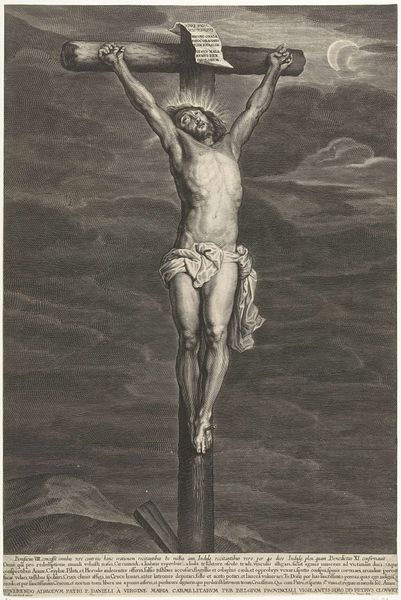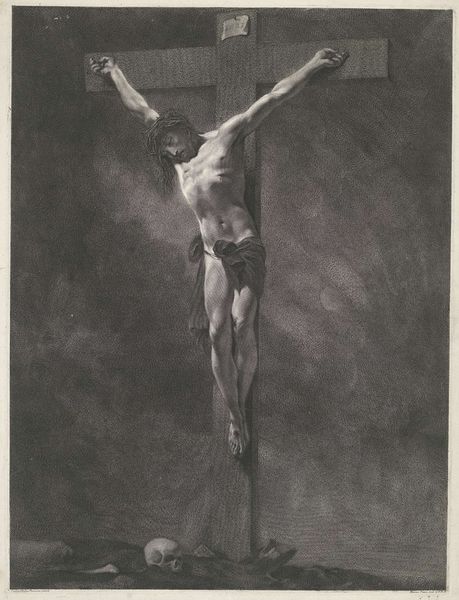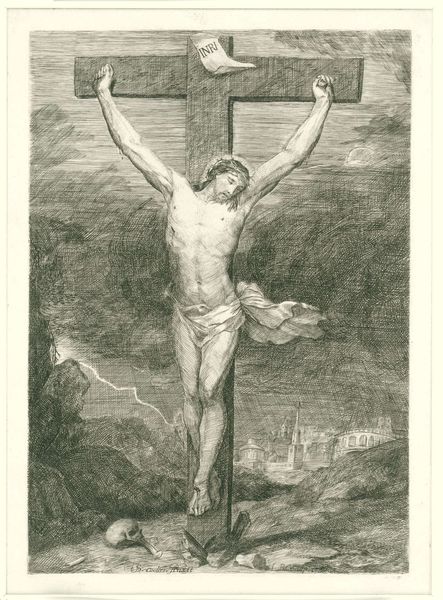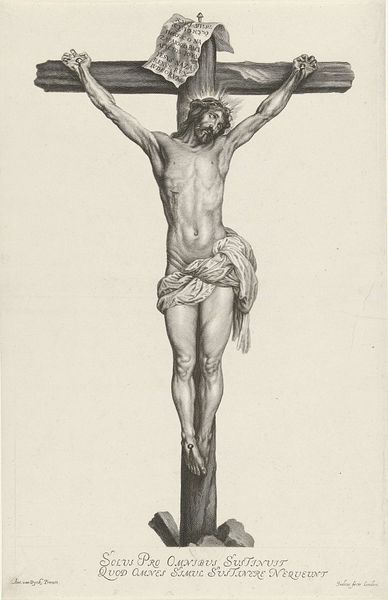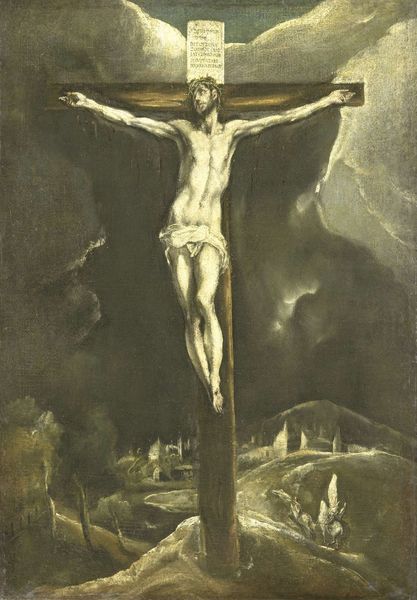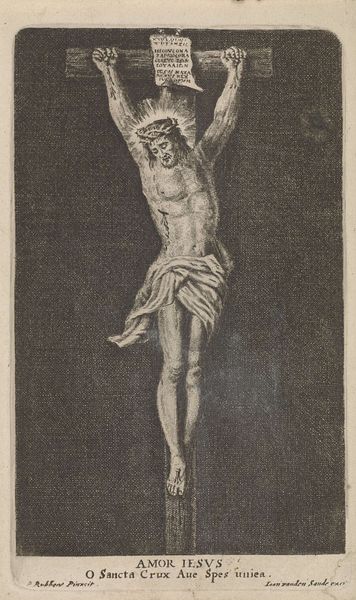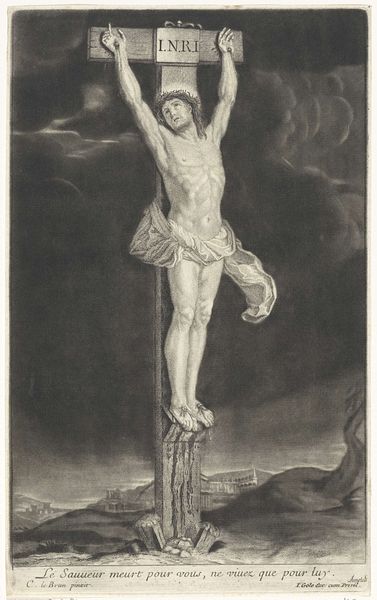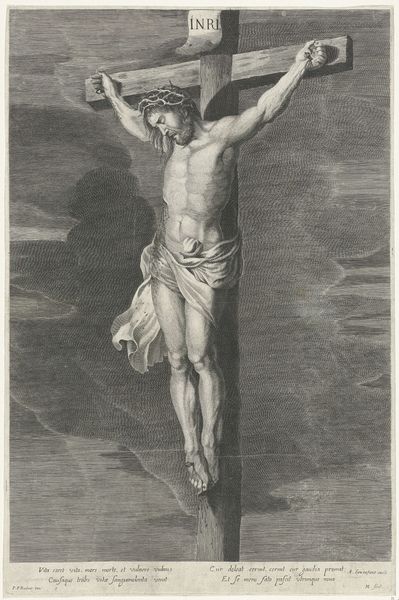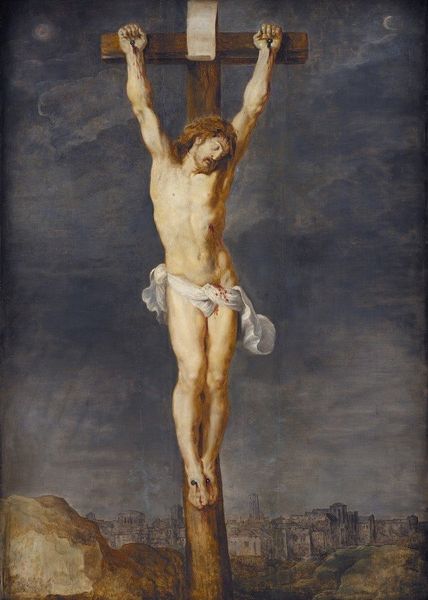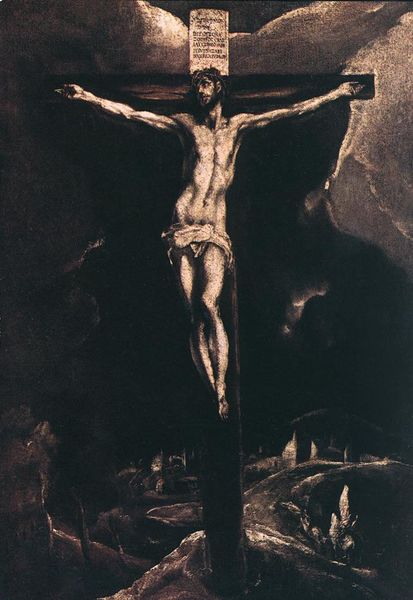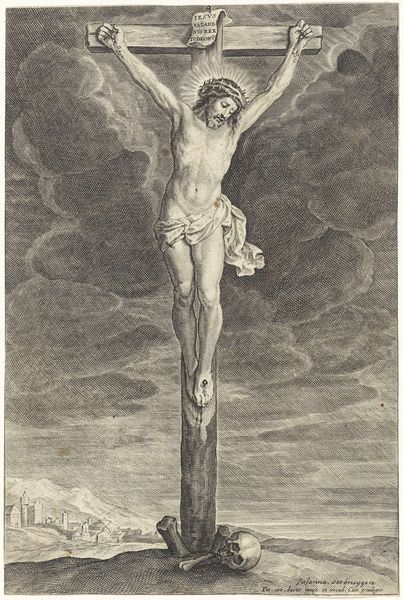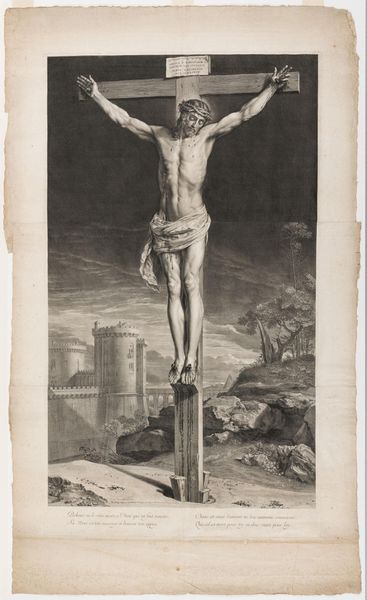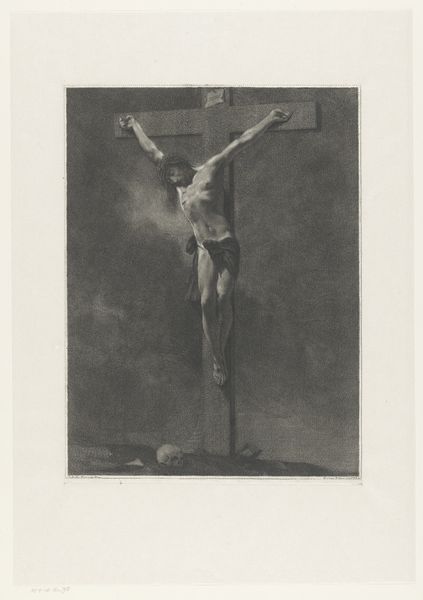
drawing, print, charcoal, engraving
#
pencil drawn
#
drawing
#
baroque
# print
#
pencil sketch
#
charcoal drawing
#
figuration
#
charcoal art
#
pencil drawing
#
charcoal
#
history-painting
#
charcoal
#
engraving
Dimensions: height 429 mm, width 274 mm
Copyright: Rijks Museum: Open Domain
Curator: This drawing, “Christus aan het kruis,” made by Jan Thomas, sometime between 1627 and 1678, is an engraving rendered in charcoal and pencil. What strikes you immediately about it? Editor: The overwhelming feeling is bleakness. It’s monochromatic, shadowy—the body is emaciated and suspended against a truly dark backdrop. You feel the suffering intensely. Curator: Yes, and notice how the medium contributes to that effect. Thomas chose charcoal, a relatively inexpensive and easily accessible material. Engravings, even though printed and reproducible, often made art more available across society. This contrasts with the traditional associations of such a serious and important subject. Editor: Interesting point. Given the context of Baroque art, where emotional intensity and religious themes often served propaganda purposes, how do you think the availability of the medium impacts the artwork's message and target audience? Does it democratize the suffering, or does it cheapen it? Curator: I'd argue that the reproducibility, especially considering the economic realities of the time, makes the image more accessible to a wider audience beyond the aristocratic patrons of the era. We can consider where Thomas produced and circulated his prints, exploring networks of production and trade that would help us better assess his audiences. Editor: Agreed. And in light of accessibility, note the sign above Christ. "INRI", a common element in crucifixions, but how would that text have been read then? Who was that messaging for? Who was being excluded from it? Curator: Placing it within broader social narratives and highlighting inherent power structures invites conversations about marginalized identities and silenced voices. The figure of Christ on the cross, and images like this one, became touchstones in liberation theologies worldwide precisely because of that enduring visibility, materiality, and availability. Editor: Exactly. Ultimately, this piece, viewed through the lens of intersectionality, urges a discussion about history, representation, and who gets to participate in the narrative. Curator: Indeed, while the artist made intentional material choices, context keeps opening avenues for thinking about the work’s continued power. Editor: Precisely. Its somber strength pushes us to face the complex intersection of production and access, history, and the realities it seeks to represent.
Comments
No comments
Be the first to comment and join the conversation on the ultimate creative platform.

